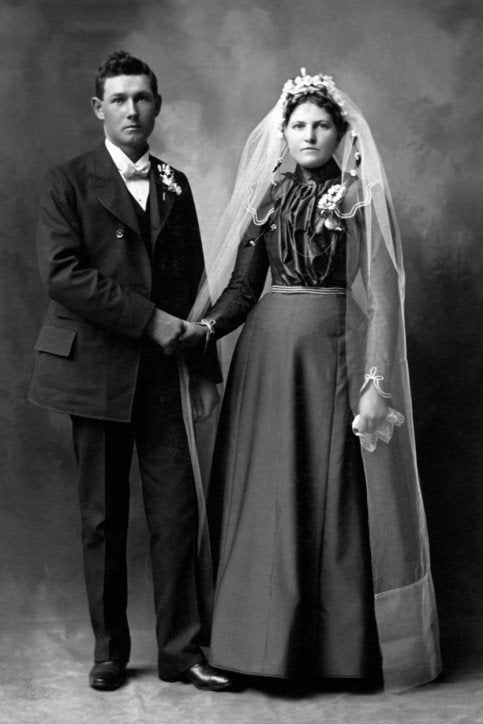
Taking a historical look at patterns of divorce in the US gives us insight into current times. Tomas Cvrcek, an economist at Clemson University, takes a long look at marital disruptions from over the period of time from 1860-1948 in the Journal of Family History.
He uses the term "marital disruption" because one of his main points is that the official "divorce rate" does not account for the number of households in which one spouse deserted the family. This is sometimes referred to as the "poor man's divorce." Cvrcek reminds us that when divorce laws are strict and when people cannot afford a legal remedy, the easiest solution to ending a marriage is to abandon the relationship. During the early part of the century between 1910 to 1930, nearly half of all disruptions never made it to court.
Cvrcek asks three broad questions about what societal changes affect marital disruption. What are the effects of 1) the business or economic cycle, 2) urbanization and 3) age at the time of marriage or age differences at the time of marriage? The historical time period he studies provide a variety of social and economic changes that give us insight into pattern of marital disruption over time.
Economic conditions influence marital disruption. During economic good times more people marry and more marriages are disrupted. In economic bad times the situation is reversed. For example, at the onset of the Great Depression, 1929 to 1932, the marriage rate dropped from 76 marriages per 1,000 women to 56 marriages per 1,000 women which accounts for the lower disruption rate through the 1930s. Cvrcek suggests that the primary way in which the business cycle influences marital disruption is through the marriage rate. Couples with fewer economic prospects are just less likely to get married.
Urbanization had a substantial impact on marital disruption during this historical period. During the 1900s, the US witnessed considerable growth of its small towns and cities. For example, between 1900 and 1920 there was dramatic growth in the number of people living in cities. Cvrcek finds that urbanization accounts for about one-third of the rise in marital disruptions during this time period.
Personal characteristics such as age at first marriage and the gap in age between brides and grooms affects divorce rates. Other scholars have presented evidence to suggest that the disruption rate is higher for couples who get married younger or who differ more in age. Cvrcek takes a historical look at those factors. In contrast to previous studies, age at the time of marriage did not seem to have much effect, but the age gap showed some effect. As the gap between the ages of grooms and brides widens, the disruption rate goes up.
Another important contribution of Cvrcek's analysis is the different conclusions that are revealed when information about desertions is excluded. Looking only for patterns with official rates of divorce (without considering desertions) suggests that neither economic conditions or the age gap have influence on divorce rates. In other words, the official divorce rates do not capture the true amount of disruption that is occurring in the marriages due to changing economic and social conditions. Thus, the true disruptions within marriages is occurring outside of the legal system. Overall, this historical look at the broad social influences on martial disruption provides valuable insights into the broad pattern of changes in family life.